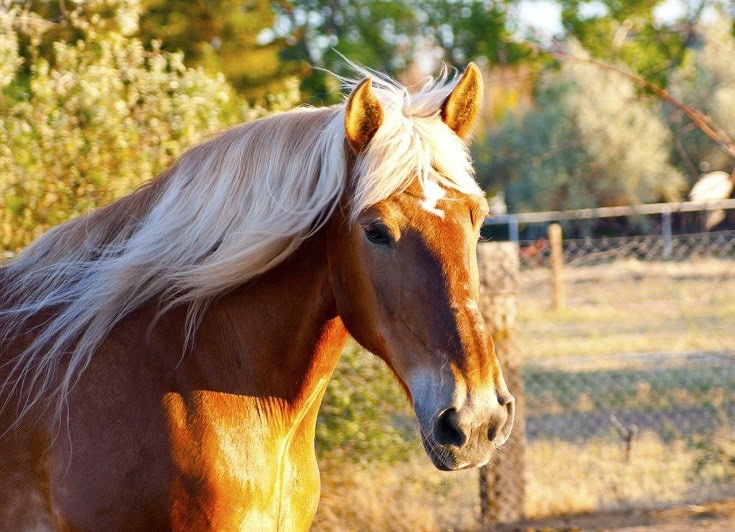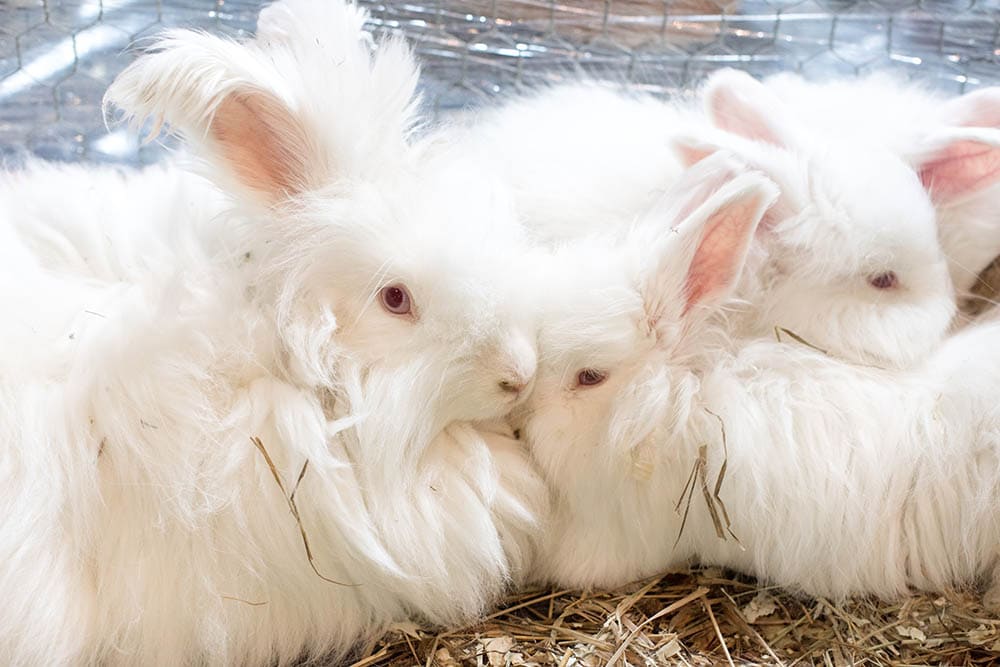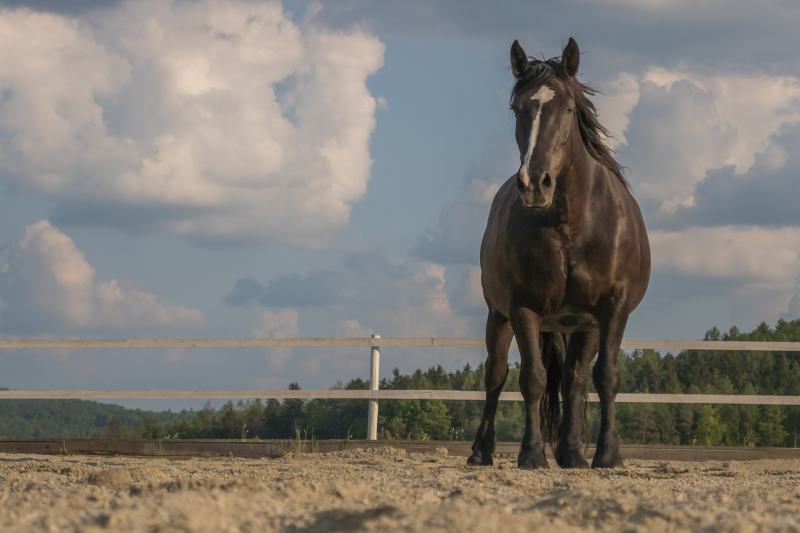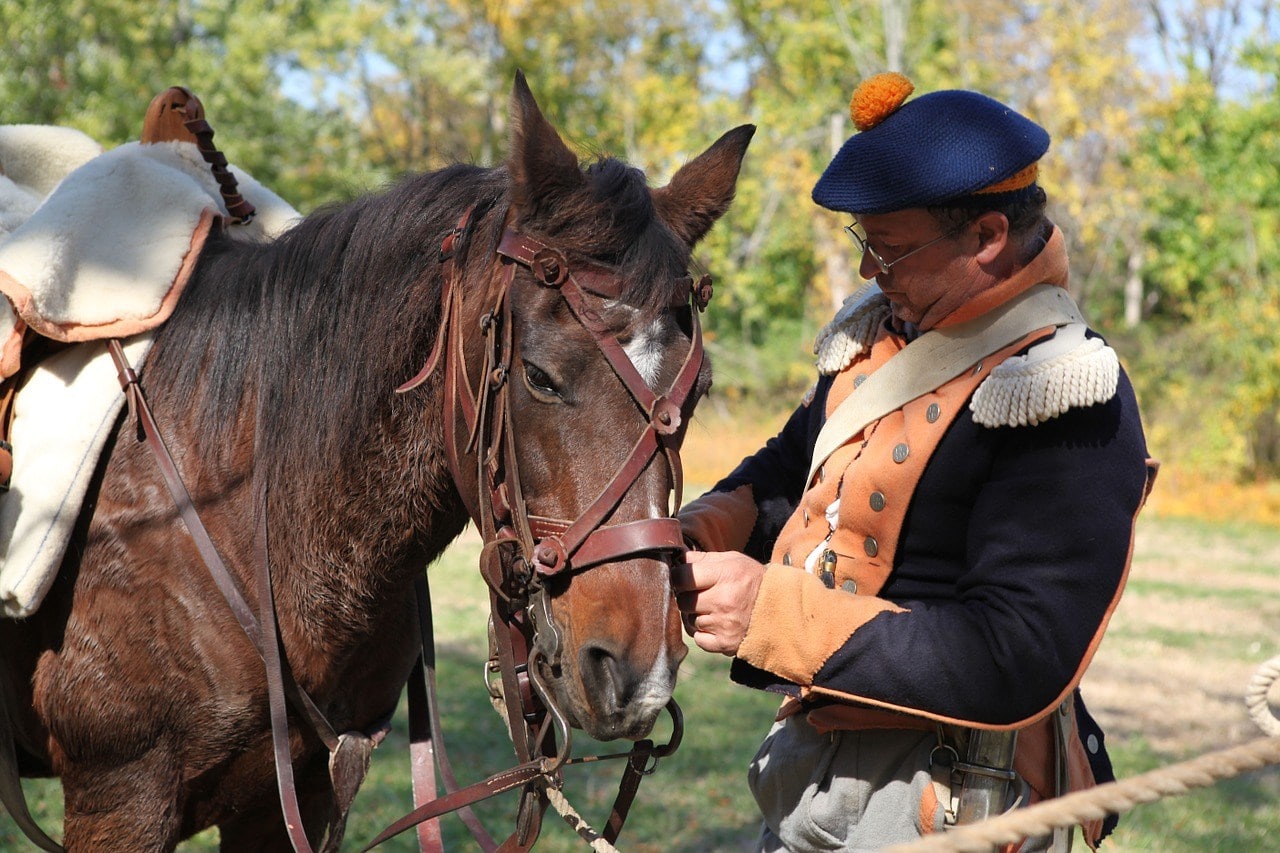VET APPROVED

The information is current and up-to-date in accordance with the latest veterinarian research.
Learn more »There are hundreds of horse breeds around the world. Horses have been domesticated for thousands of years, leading to plenty of variation between breeds. Some of these horses are very small, but others are substantial.
Most large horses are draft horses. In other words, they’re bred to pull heavy equipment and supplies. These giants can measure over 18 hands, with some growing to over 20 hands tall. Despite their size, many make excellent riding companions due to their sweet temperaments. Today you can find these impressive horses and crossbreeds pulling carriages, in shows, and even some equestrian sports.

The 7 Largest Horse Breeds
1. Shire Horse
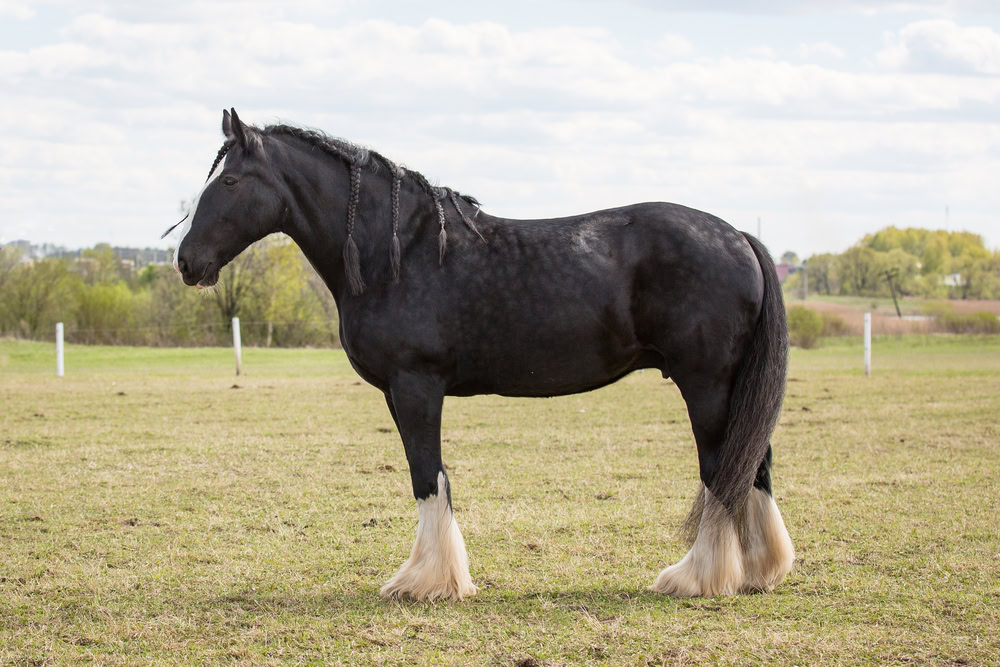
The Shire is the world’s largest horse. A Shire called Sampson holds the Guinness world record for the tallest horse ever. Sampson was born in 1846 and was a whopping 21.25 hands tall!1 Not all Shires will reach this height, with the average height being 17.1 hands, according to the American Shire Horse Association.2 They weigh an average of 1,800 to 2,400 pounds, although Sampson weighed well over 3,000.
Shires have long, heavily crested necks, and their heads have a convex profile, called a “Roman nose.” Their lower legs have long hair called “feathers.”
The Shires originated with English war horses bred around the 1500s to carry armor-clad soldiers. These gentle giants were then perfected for use in agriculture and pulling heavy loads of commercial products. The English Shire Horse Society was founded in 1878, followed by the American Shire Horse Association in 1885.
2. Clydesdale Horse
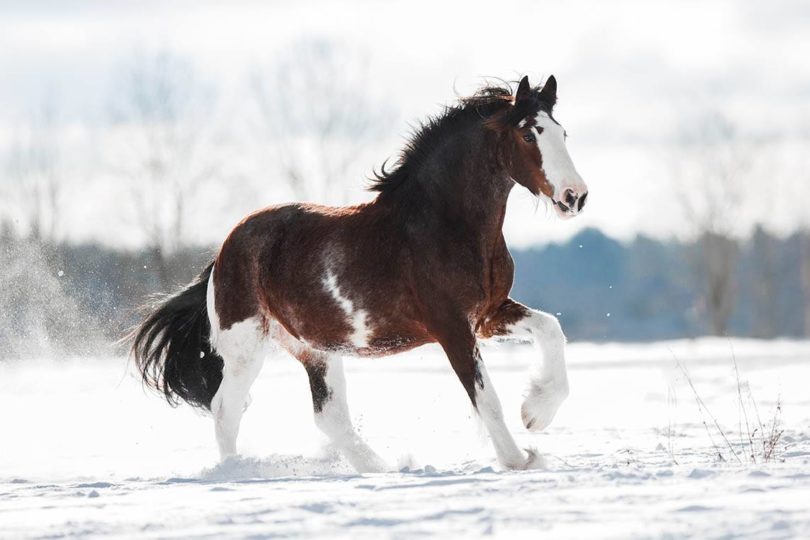
Most people are more familiar with the Clydesdale than the Shire horse. However, they are a bit smaller. They can grow 16.1 to 18 hands high and weigh around 1,600 to 2,200 pounds. In horse-showing circles, they are known for their flashy, high-stepping gait and their white, feathered lower legs.
The famous Budweiser Clydesdale horses are usually at least 18 hands high and weigh up to 2,300 pounds. King LeGear is perhaps the biggest Clydesdale, standing at a lofty 20 and a half hands high. He weighed 2,950 pounds, which is bigger than an average Shire horse.
Clydesdales are known for their energetic nature. They can be quite gentle, but they are also active. The breed originated in Scotland and was used for hauling in agriculture and coal mining. Fortunately, modern Clydesdales usually live a comfortable life as popular leisure horses.
3. Percheron Horse
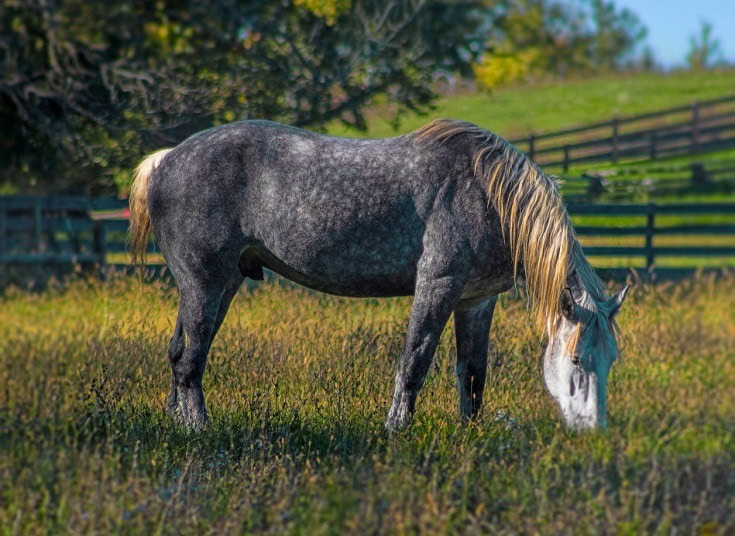
The Percheron is another colossal horse. They originated from France, particularly the Huisne River valley. This region was once known as Le Perche, which is where this breed gets its name. They were specifically bred in the 19th century for the French Army, but their ancestors may have been used in this region since ancient times. The Percheron varies in size and usually stands around 15.2 to 17.3 hands high with a stocky build that has them weighing in at around 2,000 pounds.
This breed is unlike draft horses because the fine-boned Arabian horses heavily influenced them leading to a comparatively fine head and long neck. In the 18th and 19th centuries, they were famous coach and farming horses. Percherons are mostly utilized in horse shows, parades, and driving. They can still perform forestry and farm work as necessary, and they also make good riding horses.
4. Belgian Horse
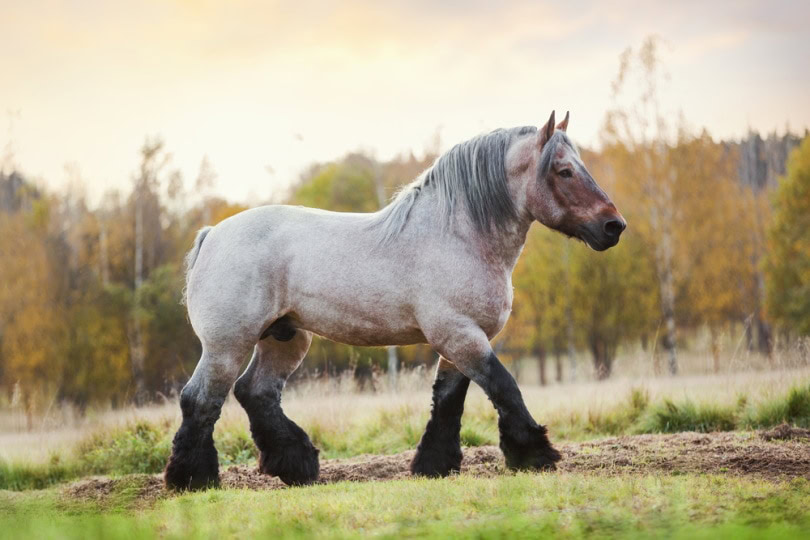
The Belgian Horse is also known as the Belgian, Brabant, or Belgian Draft Horse. These impressive horses descended from the legendary war horses in ancient Belgium, known simply as the “great horses.” With the development of the Brussell’s National Show, the breed was refined and garnered international recognition. They usually weigh around 2,000 pounds and stand around 15.3 to 17 hands high.
They are generally shorter than most draft breeds, but the Belgian Draft is still massive due to their powerful build. They have short necks and backs with massively crested necks. These equine powerlifters are known for their capacity to pull immensely heavy loads and are still used in forestry, farm, and sled work. The largest Belgian Horse was Brooklyn Supreme; he stood 19.2 hands tall and weighed over 3,000 pounds.
5. Suffolk Horses
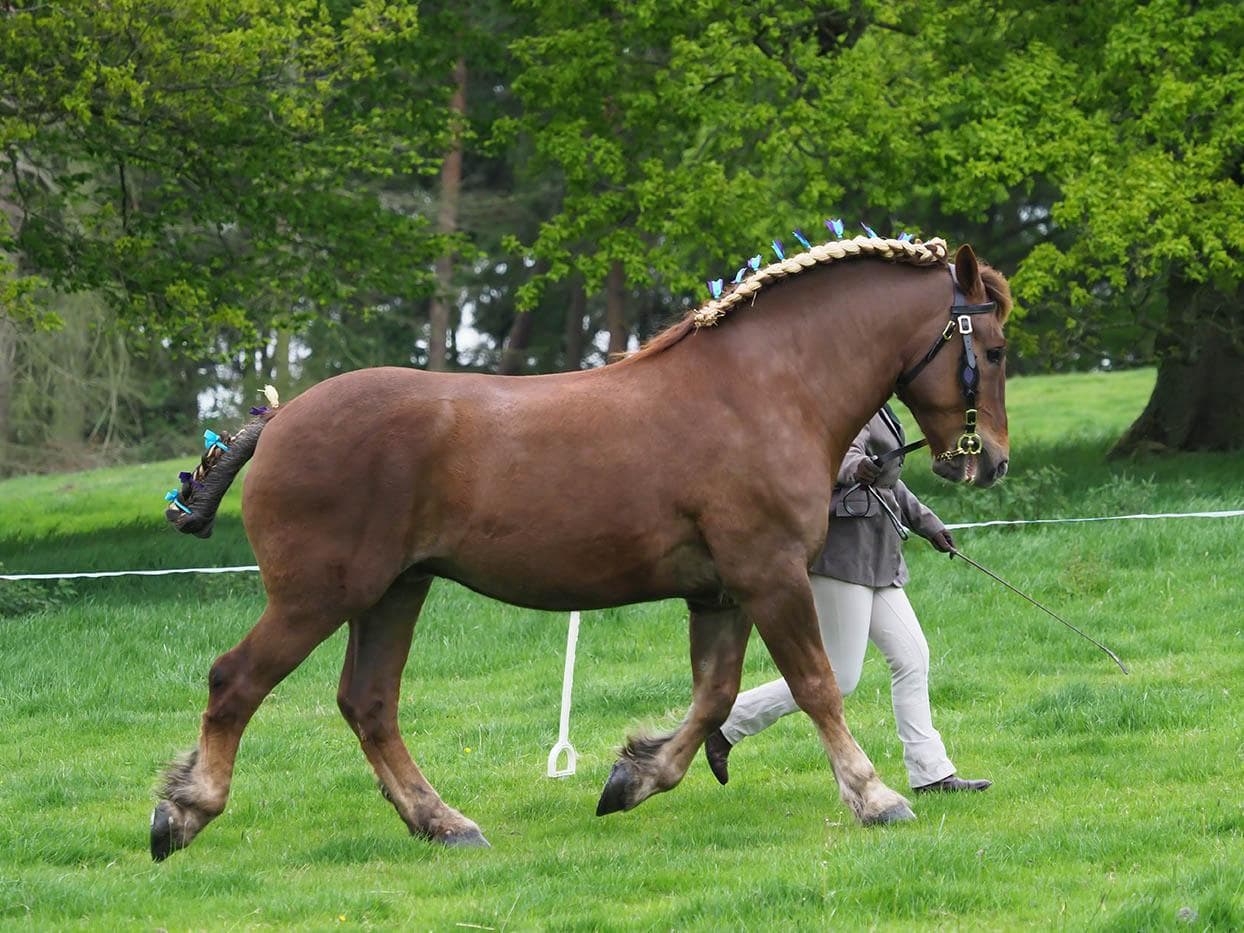
The Suffolk horse, also known as the Suffolk Punch, had humble beginnings. Farmers in Eastern England created the breed for farm work. Power, stamina, health, and longevity were the essential traits imbued into these workhorses. They stand at 16.1 hands high on average, although many individuals, especially stallions, vastly exceed this height. They weigh around 1,600 to 2,000 pounds in most cases, though larger horses are possible.
Due to many farm horses being replaced by machinery, Suffolk Punches are rare today. In the 1960’s the few farmers who kept their Suffolks remerged to reform the breed association. The breed is on the equine watchlist for the UK-based Rare Breeds Survival Trust.
Suffolk horses come in only one color: chestnut. As true draft horses, they are short-legged and well-muscled. They have sweet, docile temperaments, and if you are lucky enough to meet one today, they could be pulling a carriage or ridden.
6. Dutch Draft Horse
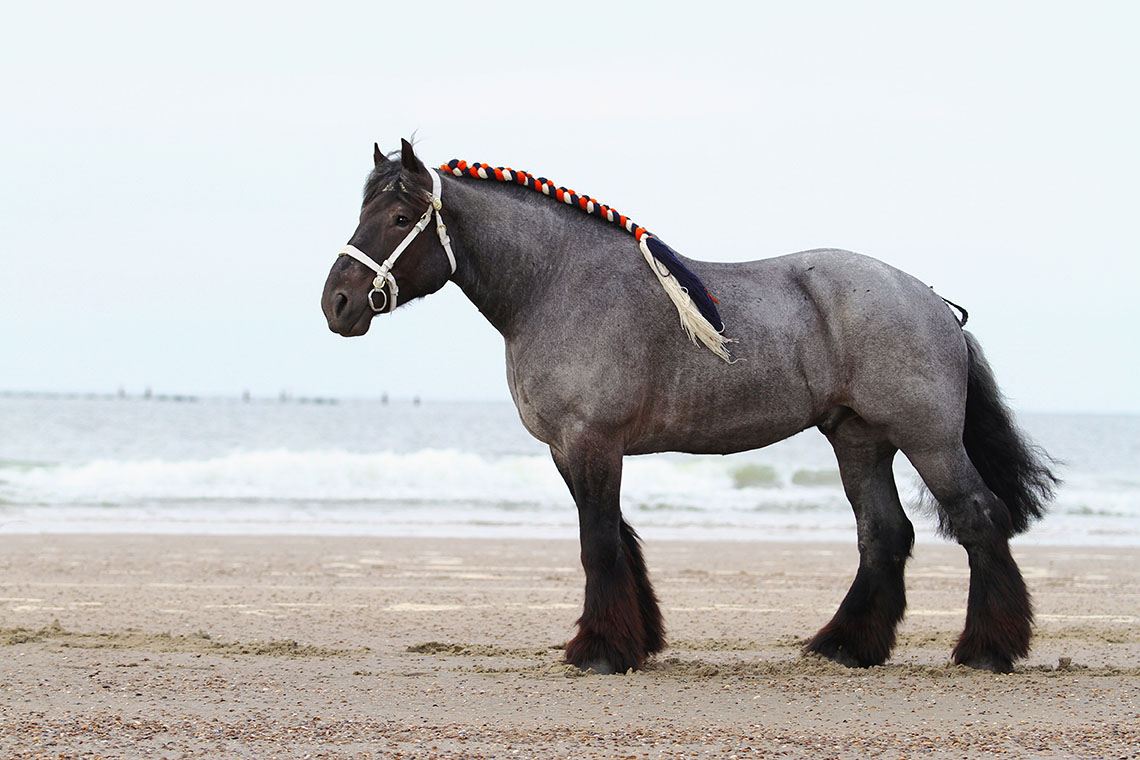
The Dutch Draft is a newer breed. It didn’t appear until the early 20th Century when Ardennes and Belgian Draft horses were commonly bred together, leading to a new breed of horse: the Dutch Draft.
These horses are an average of 16 hands high but range from 15.2 to 17 hands. The bigger horses can weigh up to 2,200, which is bigger than some others on this list.
The stocky Dutch Draft was popular in Zeeland and Groningen for farm work and similar heavy-pulling jobs. However, it didn’t have much time to become popular until World War II, when it suffered heavy losses and became an uncommon breed. Those around today can be used for breeding or farmwork.
7. American Cream Draft
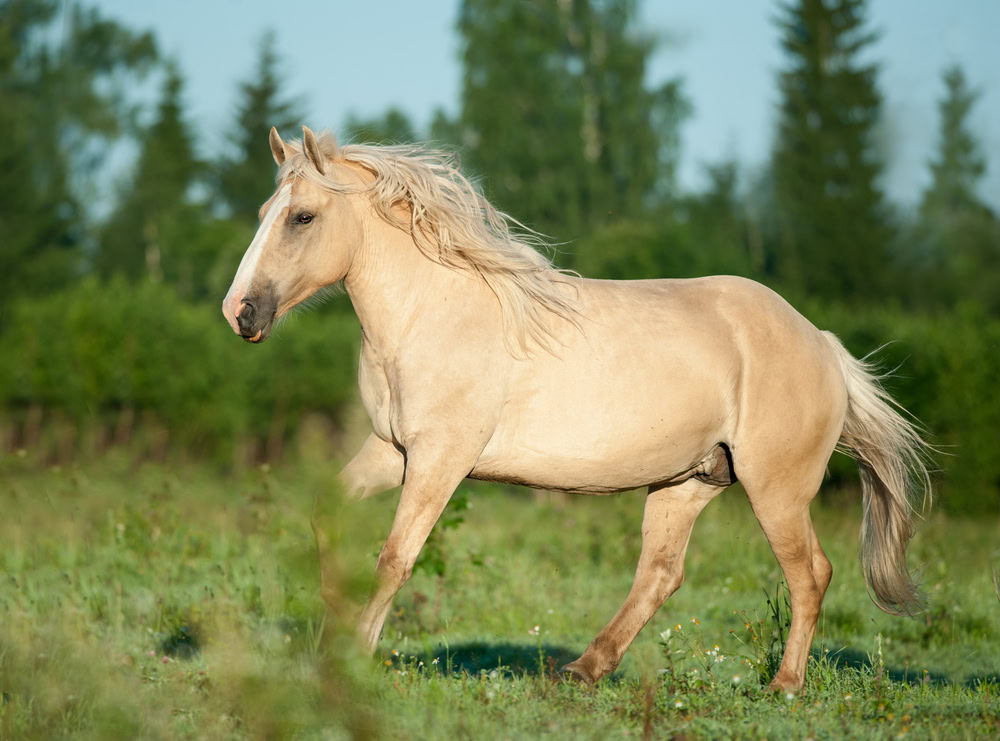
The American Cream Draft is a rare American breed developed between 1911 and 1944. American Cream Drafts can be 15 to 16.3 hands long. Mares weigh between 1,600 and 1,800 pounds, but some of the larger stallions can weigh up to 2,200.
The breed suffered losses early on, as many draft horses did when tractors started to replace horses in farming. Today they remain a special interest of a few breeders and can be found at shows in harness or under saddle.
Their most distinctive feature is the beautiful coat color, which can range from cream to golden. Despite what many think, the American Cream Draft is a distinct breed with unique genetics, not simply a draft horse of a certain color.
- https://breeds.okstate.edu/horses/
- https://www.britannica.com/animal/equine
- https://www.horseandhound.co.uk/features/biggest-horses-five-breeds-which-feature-the-worlds-largest-horses-803897
- https://a-z-animals.com/animals/horse/horse-facts/see-sampson-the-largest-horse-ever-recorded-2/
- https://equusmagazine.com/horse-care/eq_creamdr975
Featured Image: Studio10-27, Pixabay
